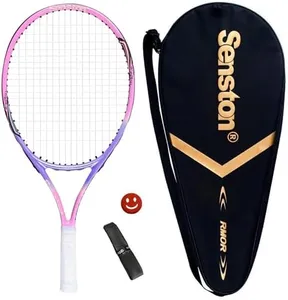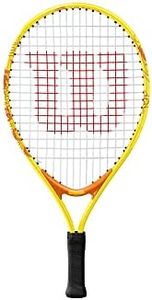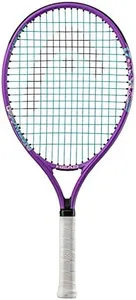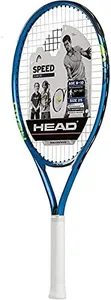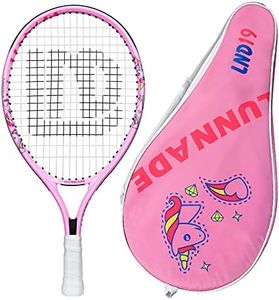We Use CookiesWe use cookies to enhance the security, performance,
functionality and for analytical and promotional activities. By continuing to browse this site you
are agreeing to our privacy policy
10 Best Kids Tennis Rackets
From leading brands and best sellers available on the web.By clicking on a link to a third party's website, log data is shared with that third party.
Buying Guide for the Best Kids Tennis Rackets
Choosing the right tennis racket for kids is all about finding a balance between comfort, playability, and encouraging skill development. Since children are still learning technique and building strength, the racket should be easy to handle so they can focus on enjoying the game without struggling. Understanding the main aspects of kids’ tennis rackets will help you select the perfect fit for your child’s age, size, and playing level.Racket LengthRacket length is the measurement from the base to the tip and is crucial for proper grip and swing. For kids, shorter rackets are easier to control and help prevent strain or injury. Racket lengths for children generally range from 17 inches to 26 inches. Younger or shorter kids (under age 4-5) start with 17–19-inch rackets; as they grow (age 6-8), 21–23-inch rackets are ideal, and older kids (age 9-12) usually go with 25–26 inches. You should match the racket’s length to your child’s height and arm length—have them hold the racket at their side; the racket’s head should just touch the ground to be the right fit.
WeightThe weight of the racket affects how easy it is for a child to swing and control during play. Lighter rackets (around 180–220 grams) are recommended for younger kids or beginners since they are easier to manage and less tiring for small arms and wrists. Heavier rackets (towards 250 grams) might suit older or stronger kids who have more developed technique. If your child is struggling to lift or swing the racket freely, it’s probably too heavy; if it feels too flimsy and vibrates a lot, it might be too light for them.
Grip SizeGrip size refers to the circumference of the handle and is vital to prevent slipping and ensure comfort. Kids’ rackets usually have smaller grips fitting their hands, commonly between 3 ⅝ and 4 inches. If the grip is too big, it’s hard for a child to grasp, while too small can tire their hand and affect control. To find the right grip, your child should be able to wrap their fingers around the handle with a small space between fingertips and palm—if there’s not enough space, go up a size; if there’s too much, try smaller.
MaterialMaterials determine the racket’s durability, weight, and responsiveness. Kids’ rackets are usually made from aluminum or composite (a blend of materials), both of which are lightweight and sturdy enough for the beginner and intermediate level. Aluminum rackets are affordable and resistant to rough handling, while composite materials can offer a bit more performance for keen young players. Unless your child is an advanced junior, prioritize rackets that are lightweight and forgiving instead of advanced materials that don’t add much benefit at this level.
Head SizeHead size is the area of the racket’s stringed section, impacting how easy it is to hit the ball. Larger heads (above 100 square inches) mean a bigger ‘sweet spot’, making it easier for kids to hit successful shots, boosting their confidence and learning. Smaller heads require more skill and precision, better suited for advanced juniors. For a beginner or intermediate child, a larger head size is usually best—it helps them make contact more easily and enjoy the game without frustration.
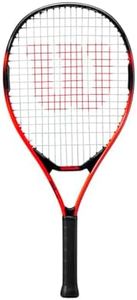
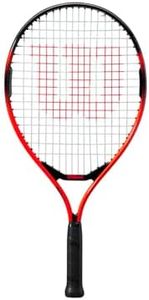


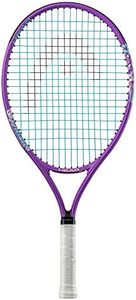
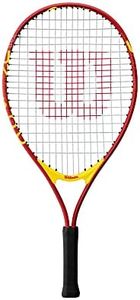
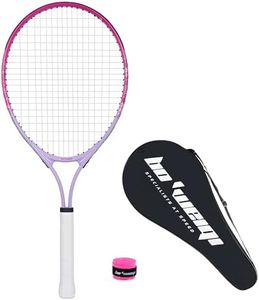
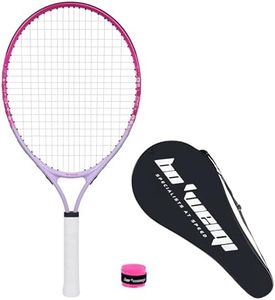

![Prince (Prince) [GATT lifted already] junior tennis racket Sierra 26 7TJ051](https://images-proxy.bestreviews.guide/-jUsspV4aQSn-_UMisKB99yrdlg=/0x300/https://m.media-amazon.com/images/I/41JSXzGLG3L._AC_CX679_.jpg)
